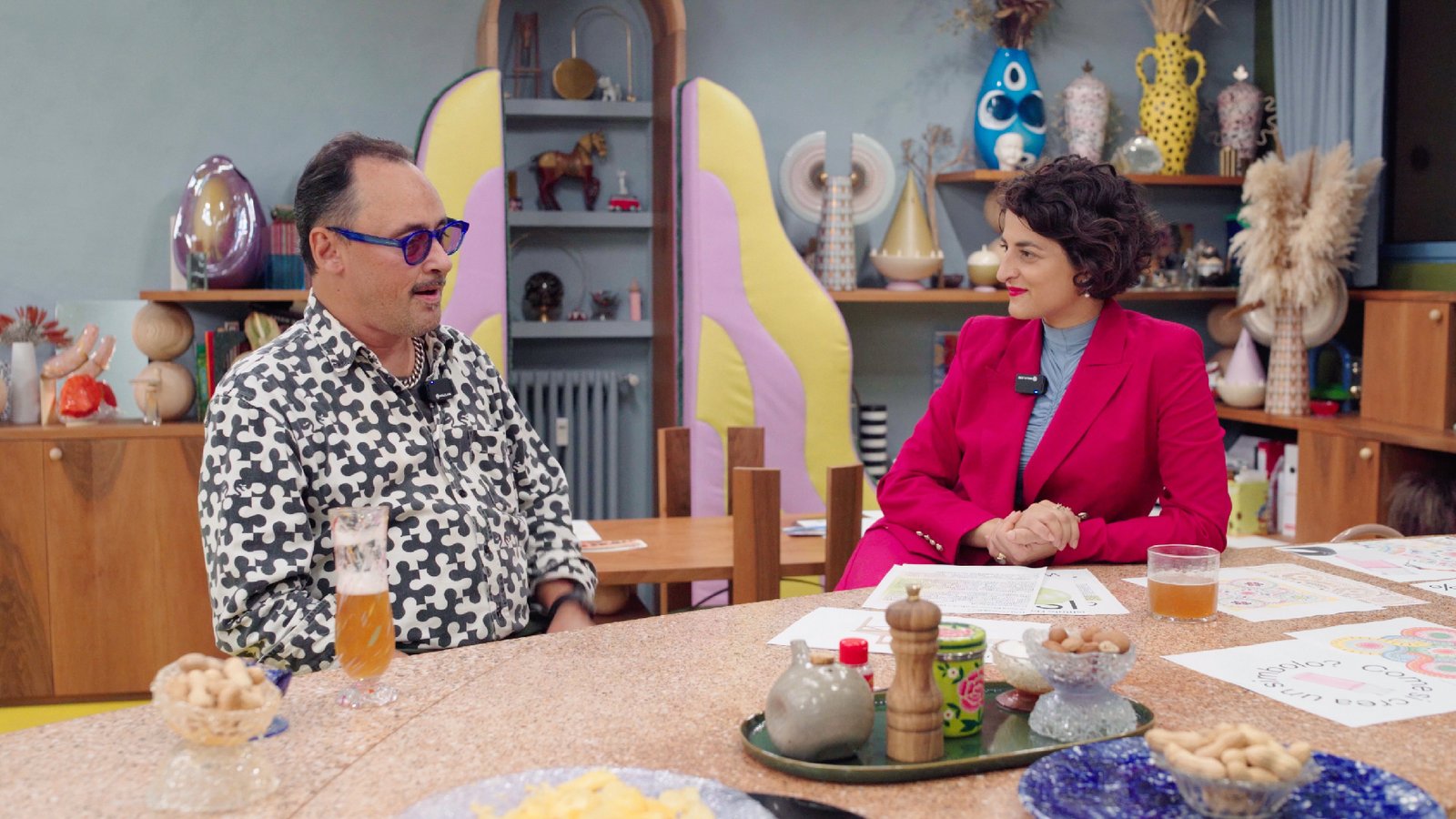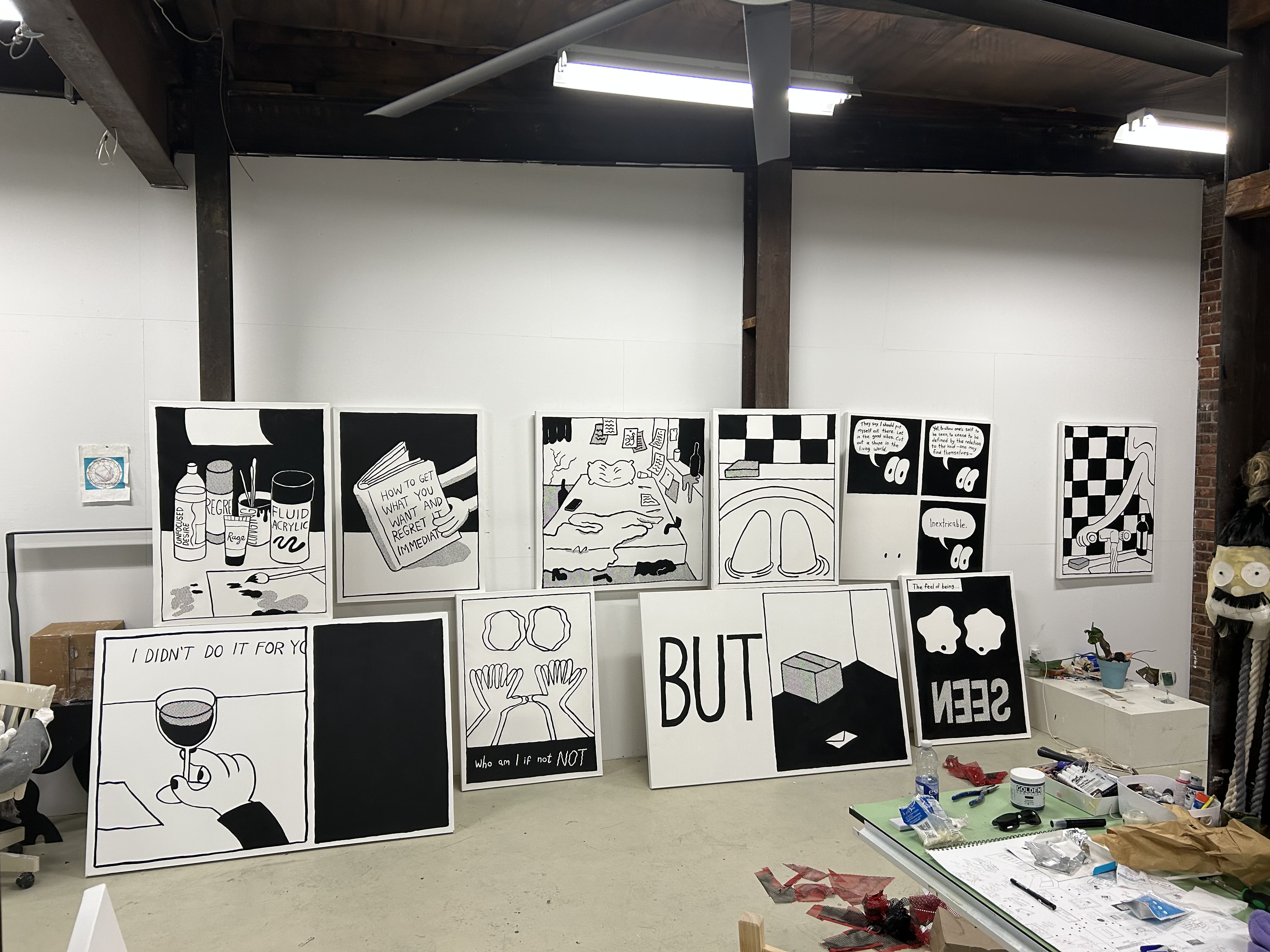
Humor in Contemporary Art: How Artists and Comedy Create Visual Tension
Discover how contemporary art uses humor and irony to engage audiences, through the works of Winnie Hall and Walter Scott.
Notoriously, there’s little laughter in art galleries. It’s part of the whole no shouting, no running about, no touching agreement we’ve all signed up to upon arrival. It’s only been recently that museums and galleries have been questioning this unspoken contract, trying to make viewing experiences more interactive and bringing in groovier late night events (yes, even comedy gigs). But this loosening of the rule of silence in the gallery seems to be more about our interactions with one another, rather than our interactions with the art on the walls. Is art funny? Funny in a way that you would laugh out loud even if you were on your own?
Art is changed when it enters the exhibition space. A piece can be transformed by the wall it is hung on, its message heightened, muted, or deformed depending on where it is shown: a white cube, an aircraft hanger, a stately home. For this reason it seems unfair to judge the humour of an artwork by its display.
Although many stand-up comedians create incredibly complex routes to laughter, a spoken joke is still a joke if it is stripped to its basics: set-up and a pun or an unexpected twist. Our laughter is facilitated by being walked through these steps by the comedian. Unlike this form of comedy, an artist is not able to guide us part-by-part along the path to laughs, because they cannot control where we look, when, and what bank of references we are bringing to our viewing experience. However, what artists can do, in spite of this lack of jurisdiction over the eyes of their audience, is to create on their canvases a complex brew of what is explicitly said and what remains unspoken, hope and disappointment, instruction and suggestion.
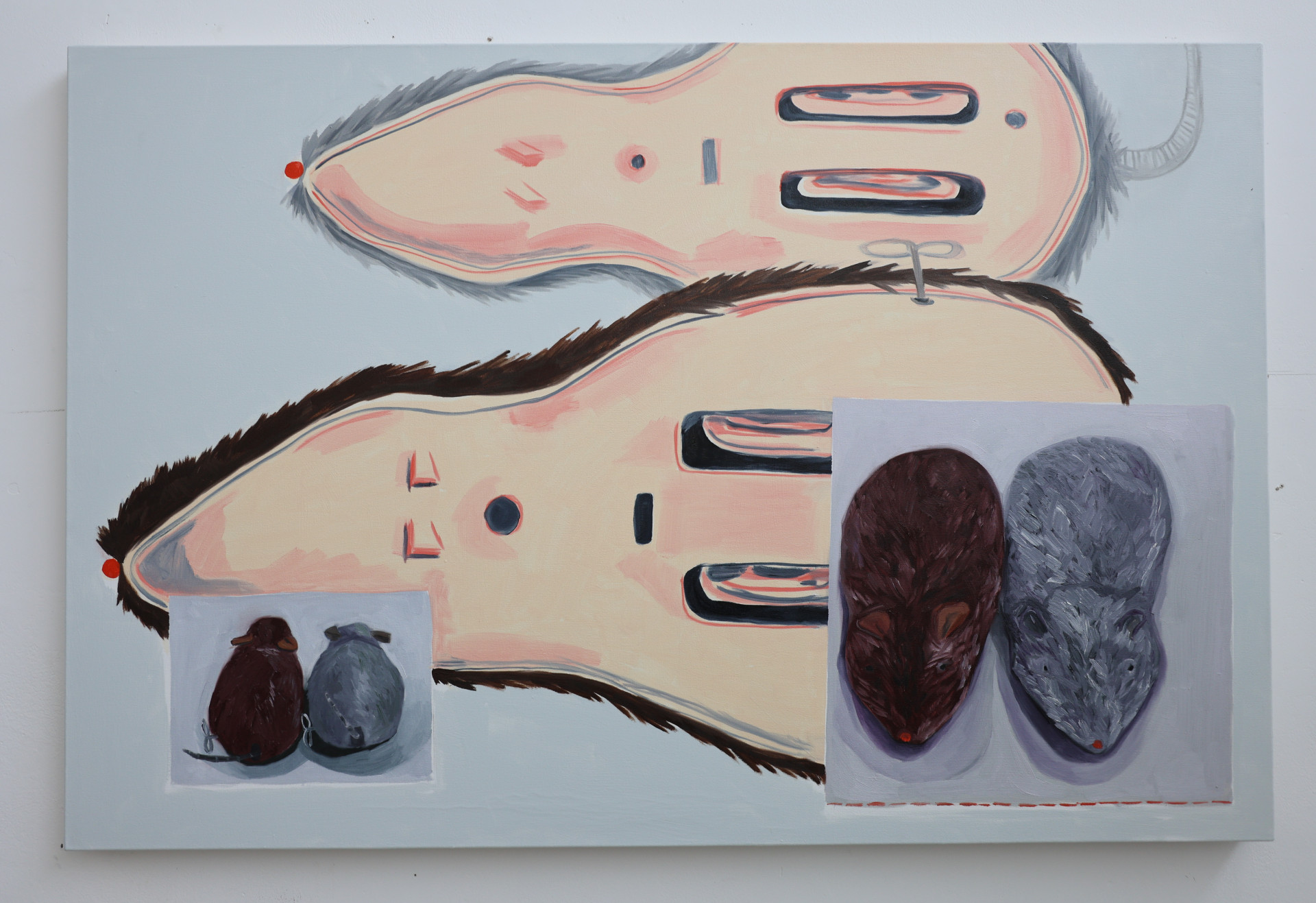 Winnie Hall Wind Up Mice
Winnie Hall Wind Up Mice
Winnie Hall is a London-based painter, who graduated with their BFA from Chelsea College of Arts in 2020. Her work is filled with unusual close-up perspectives and an occasional focus on abject detail: a bit Pauline Boty, a bit televisual, a bit like a postcard from a Surrealist island. As part of a Studio Programme at Turps in South East London, Hall has created a new series, ‘Props for Jokes’, showing second-hand equipment (from whoopie cushions to fake mice) for practical jokes found on eBay. Hall was drawn in by the humour of the sales listings themselves:
“In my mind, they’re all being sold off by parents without permission… there is humour to be found in the way that they’ve laid the jokes out. On top of a sofa or using a shoe box as a sort of plinth. A pile of plastic snakes mounted on top of eachother, it shows an element of play. I like the idea of these tools for laughter taking on lives and being used by difference people”.
Humour has formed a backbone of Hall’s practice since graduating. Her intense zoomed-in vantage point bringing something abstractly comical to each of her compositions, regardless of their content. ‘Props for Jokes’ is a slight departure from her previous works, which were often built around a pun. “When I started making work years ago on my foundation I made a lot of ‘one-liner’ works where the joke was immediate. I have learnt to try to hold more information back.”
Walter Scott is a Canadian artist and cartoonist, graduating from the University of Guelph in 2018 with his MFA. In his comics, Scott is licensed to use both words and images, designed to be “read” in the way that we have been trained to digest comic strips. We go in with a background cultural understanding of how to find the joke. “Comics are only one aspect of it, but narrative construction is central to everything I do. Recently, I have been focussing less on comics in a literal sense and more on creating narrative-based paintings that use the language of comics”. Scott’s mastery of this narrative framing allows him to communicate precisely with his audiences, even in the absence of words. For his latest exhibition, “A Shape in the Living World” at Toronto’s Hunt Gallery, Scott embraced the darker side of his humour as a universal language:
“Dark humour allows us to talk about real topics. If there was an art piece about the agony of failure, it would make most people uncomfortable to experience. But if it uses a lens of dark humour, poking fun at the experience or satirizing it, it becomes more palatable. We can laugh along with the artist and relate to their experience. I think, at its core, that’s what humour allows—the relatability of human experience.”
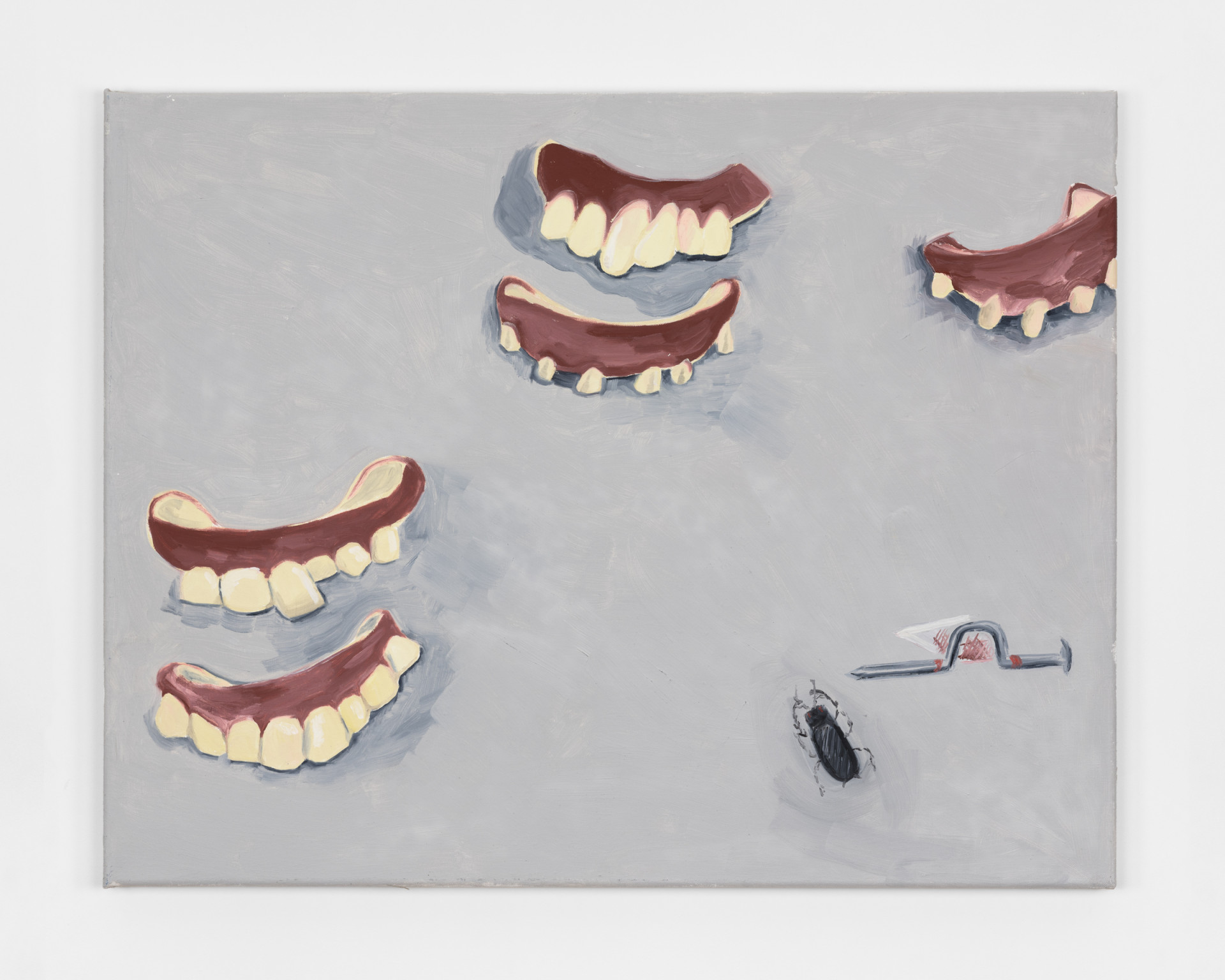 Winnie Hall Fake Teeth, Fake Nail, Fake Beetle 2024
Winnie Hall Fake Teeth, Fake Nail, Fake Beetle 2024
The works in “A Shape in the Living World” are a sidestep from Scott’s more traditional comics, “there’s less of a narrative and more of surrealist vignettes, It might take the viewer a moment to make a connection between the text and the image since it’s not a literal one-to-one”. This disorientation is also present in Hall’s work, in the jolt her pieces give you by putting the unexpected in the spotlight (or the spotlight itself being unexpected).
“Dark humour can be effective in art because the first thing it does is shock”, Scott tells me. It is this shock, I think, that brings the tension that artists must harness to make their audience feel (and potentially to laugh). All art is tension - between what the artist shows you and reality. Like Hall working to hold back information, both artists have ramped up the tension in their works to invoke a reaction from their audience - urging them to fill in their own gaps and create their own interpretations.
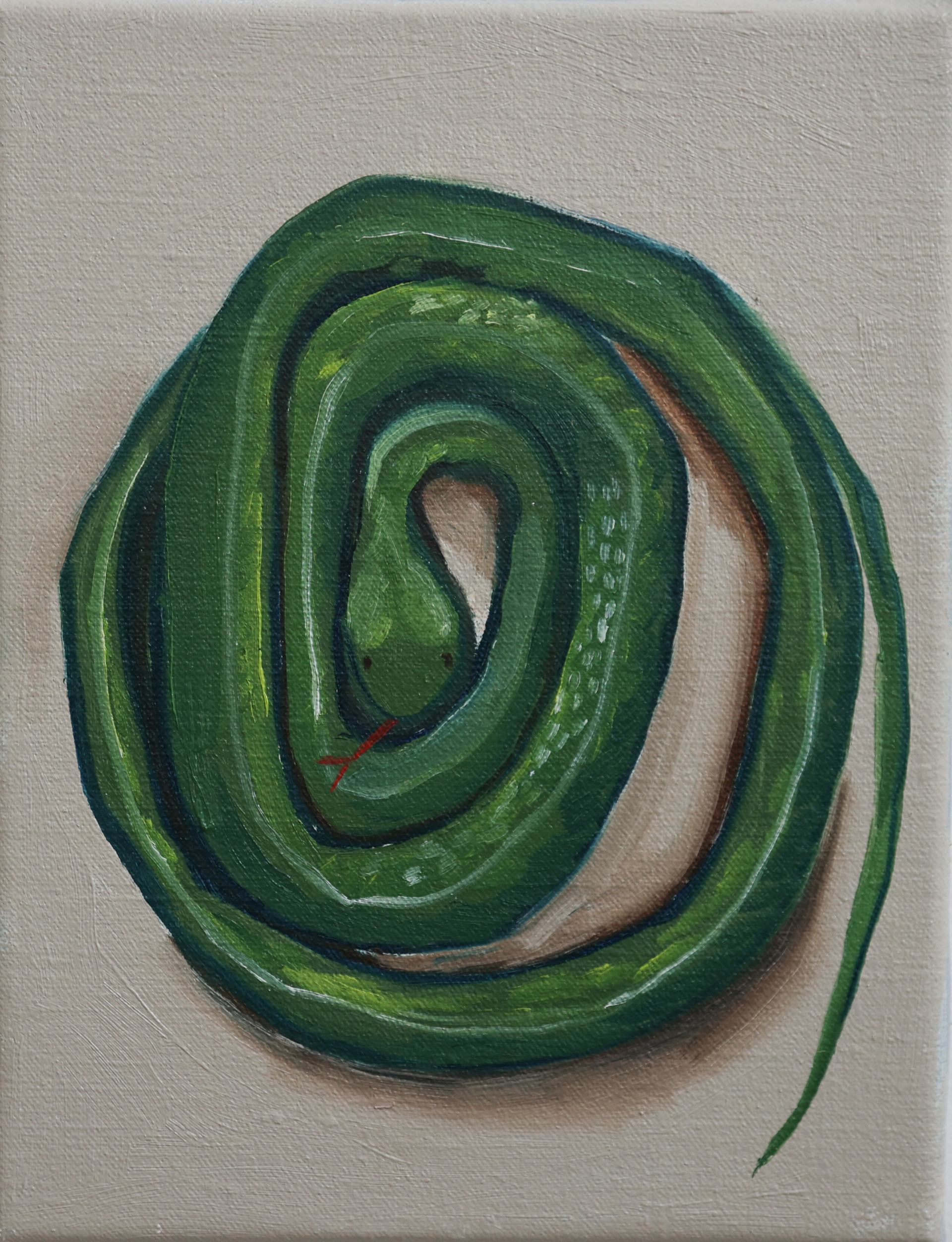 Winnie Hall, Rubber Snake 2024
Winnie Hall, Rubber Snake 2024
Laughter may simply be one option in our repertoire of reactions to shock. Like when a child falls over and looks to their parents to judge - based on their reaction - whether they should cry or carry on playing. Some stand-up comics are loved and loathed in equal measure because the shock they give their audience is open to interpretation. Hall is inspired by the work of artists whose work “holds a necessary tension alongside humour”, who use “humour to smuggle truth and make you question what you’re looking at”. Scott wants his viewers to “project their own ideas” onto the work “if that may be humour, satire, or something more tender”.
Artists and comedians have the power to shock us. We, as audiences, have the power to decide whether or not to laugh.
Cover Image: Walter Scott Studio Shoot
Verity Babbs is an art historian, presenter, and comedian from the UK. She hosts live art-themed comedy nights 'Art Laughs' which perform regularly at London's National Gallery, and she has appeared on BBC Radio 4 and BBC News. She has written for several arts publications including the Guardian, RA Magazine, Hyperallergic, and Artnet News, and has worked as a presenter for Tate, London Art Fair, and Elizabeth Xi Bauer gallery.



